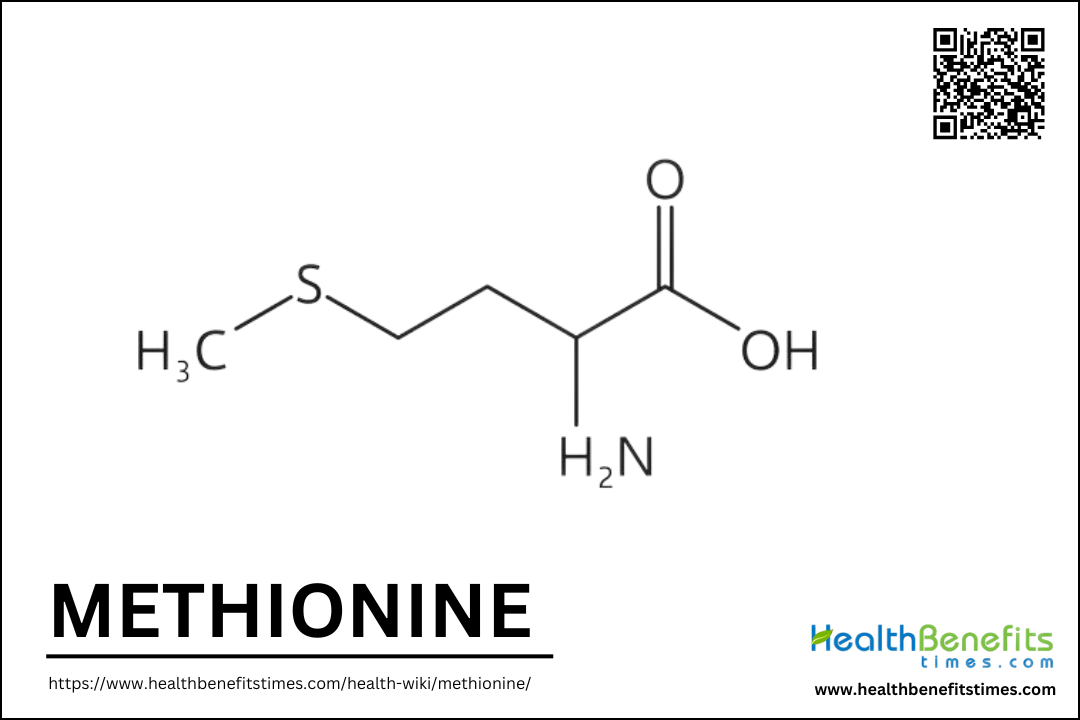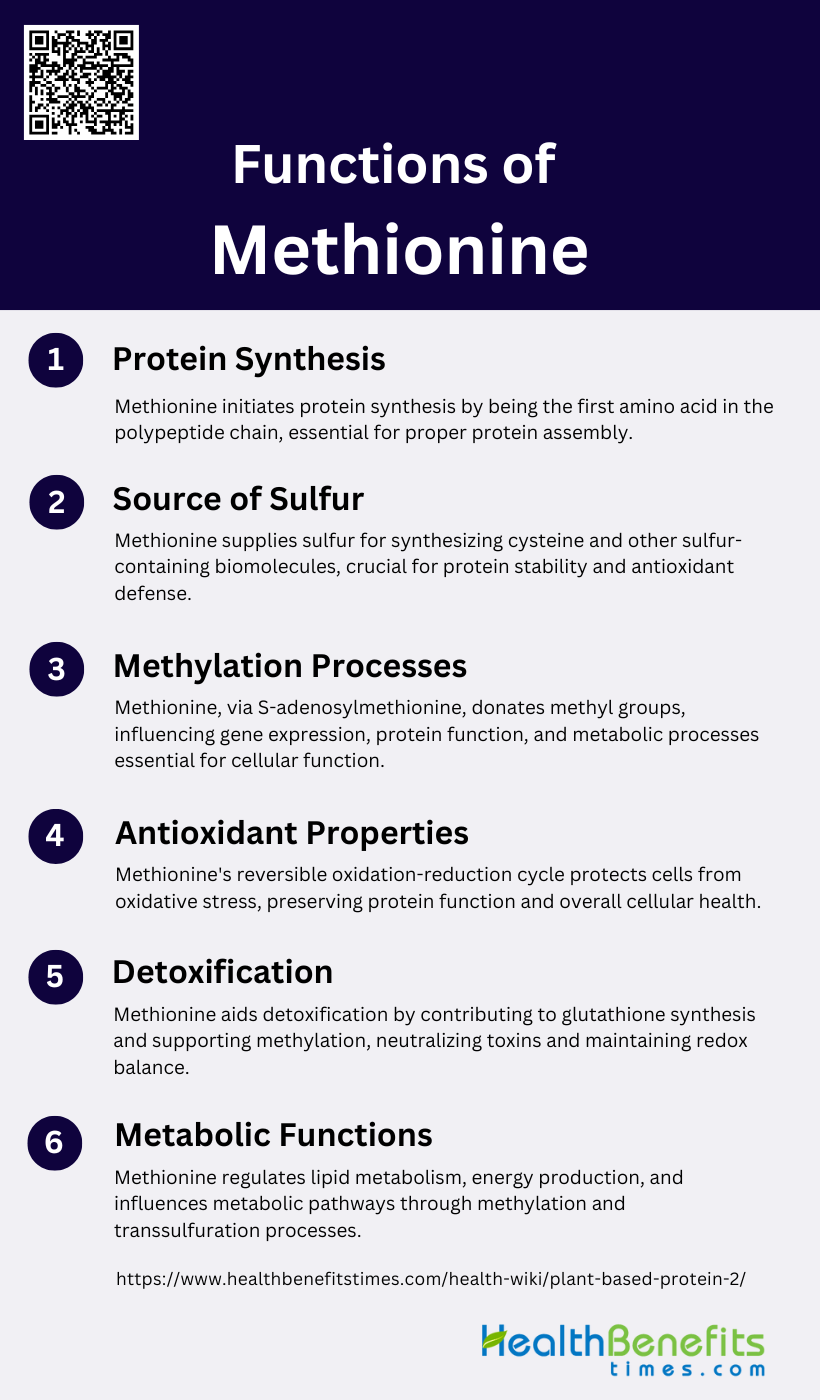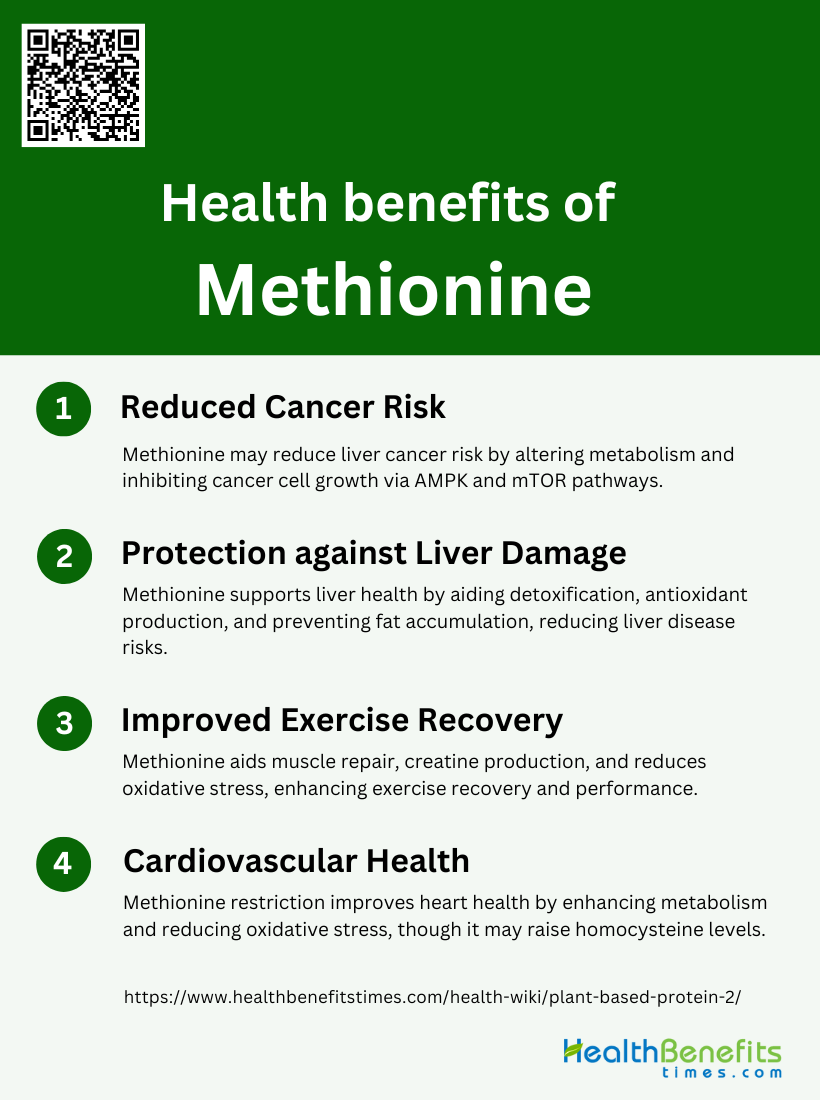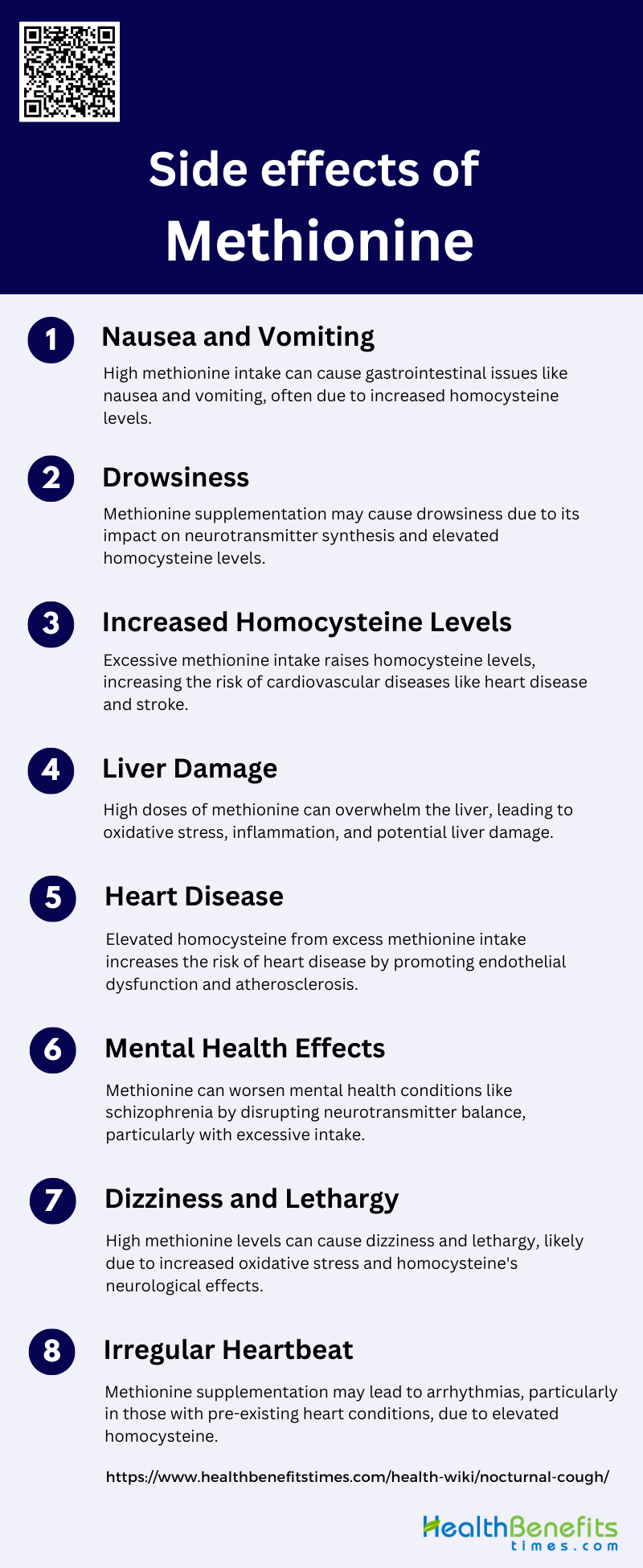Methionine is a dietary essential amino acid that plays a crucial role in various biological processes. It is unique among amino acids due to its sulfur atom, which is integral to its function in protein synthesis and metabolism. Methionine serves as the initiating amino acid in eukaryotic protein synthesis and is often found buried within the hydrophobic core of globular proteins, although some residues on protein surfaces can be oxidized and subsequently reduced back by methionine sulfoxide reductase. Metabolically, methionine is converted to S-adenosylmethionine (SAM), the principal biological methylating agent involved in numerous methylation reactions, including DNA and protein methylation. It also plays a role in the synthesis of other important molecules such as creatine, cysteine, and glutathione, which are vital for antioxidant defense and cellular function. Methionine’s involvement in these pathways underscores its importance in maintaining cellular health and function, and its restriction has been studied for potential benefits in reducing oxidative stress and disease progression.
Functions of Methionine
Methionine is a versatile amino acid that plays several crucial roles in the body’s overall health and metabolic processes. It is not only essential for protein synthesis but also contributes to various biochemical pathways that support cellular function and growth. Below are some of the key functions of methionine:
1. Protein Synthesis
Methionine plays a crucial role in the initiation of protein synthesis in eukaryotic cells. It is the first amino acid incorporated into the nascent polypeptide chain during translation, setting the stage for subsequent amino acids to be added. This initiation process is vital for the proper assembly of proteins, as methionine ensures that the translation machinery starts at the correct location on the mRNA. In prokaryotes, a modified form of methionine, N-formylmethionine, serves a similar function. The unique role of methionine in protein synthesis underscores its importance in cellular function and protein production.
2. Source of Sulfur
Methionine is a key source of sulfur, an essential element for various biological processes. Sulfur from methionine is used in the synthesis of other sulfur-containing amino acids, such as cysteine, which is crucial for forming disulfide bonds in proteins, thereby stabilizing their structure. Additionally, sulfur is involved in the synthesis of important biomolecules like glutathione, a major antioxidant, and taurine, which plays roles in bile salt formation and osmoregulation. The transsulfuration pathway, where methionine is converted to cysteine, highlights the critical role of methionine as a sulfur donor in metabolic processes.
3. Methylation Processes
Methionine is the primary methyl donor in the body through its conversion to S-adenosylmethionine (SAM), which is involved in numerous methylation reactions. These reactions are essential for the methylation of DNA, RNA, proteins, and lipids, influencing gene expression, protein function, and membrane fluidity. Methylation processes are crucial for the synthesis of key metabolites such as creatine, phosphatidylcholine, and melatonin. The versatility of SAM in transferring methyl groups underscores methionine’s pivotal role in maintaining cellular function and regulating metabolic pathways.
4. Antioxidant Properties
Methionine exhibits significant antioxidant properties, primarily through its ability to be oxidized to methionine sulfoxide and subsequently reduced back to methionine by methionine sulfoxide reductases. This reversible oxidation-reduction cycle helps protect cells from oxidative damage by scavenging reactive oxygen species (ROS). Methionine residues in proteins can act as endogenous antioxidants, safeguarding other critical amino acids from oxidative stress and maintaining protein function. This antioxidant mechanism is vital for cellular defense against oxidative stress, contributing to overall cellular health and longevity.
5. Detoxification
Methionine plays a role in detoxification processes by participating in the synthesis of glutathione, a major cellular antioxidant that neutralizes toxins and free radicals. Glutathione is synthesized from cysteine, which is derived from methionine through the transsulfuration pathway. This pathway is crucial for maintaining redox balance and protecting cells from toxic insults. Additionally, methionine’s involvement in methylation reactions aids in the detoxification of harmful compounds by facilitating their conversion into more water-soluble forms for excretion. Thus, methionine is integral to the body’s detoxification systems.
6. Metabolic Functions
Methionine is involved in various metabolic functions, including the regulation of lipid metabolism and the synthesis of important biomolecules such as creatine and carnitine. It acts as a precursor for these compounds, which are essential for energy production and muscle function. Methionine also influences metabolic pathways through its role in methylation and transsulfuration processes, affecting the synthesis and regulation of numerous metabolites. Furthermore, methionine restriction has been shown to modulate metabolic health, potentially reducing the risk of metabolic diseases and extending lifespan.
Food Sources of Methionine
Methionine must be obtained through diet as the body cannot synthesize it. It is found abundantly in various protein-rich foods, making it crucial for maintaining adequate nutritional intake. Below are some primary food sources of methionine:
1. Animal-Based Sources
Animal-based sources of methionine are crucial for human nutrition due to their high bioavailability and rich amino acid profiles. Methionine, an essential amino acid, plays a vital role in various metabolic pathways, including the synthesis of cysteine and the antioxidant glutathione, as well as serving as a primary methyl donor in the body. Common animal-based sources include fishmeal and plasma powder, which are not only rich in methionine but also provide other essential nutrients like energy and minerals. Studies have shown that diets incorporating these sources can significantly influence growth performance and antioxidant capacity, particularly in animal models such as piglets. Therefore, incorporating animal-based proteins like fish, meat, and dairy products can effectively meet methionine requirements in human diets.
2. Plant-Based Sources
Plant-based sources of methionine are generally lower in methionine content compared to animal-based sources, but they are still valuable, especially for those following vegetarian or vegan diets. Methionine in plant-based foods is often accompanied by other essential nutrients and fibers, which contribute to overall health. Common plant-based sources include legumes, nuts, seeds, and grains. For instance, soybeans and lentils are notable for their relatively higher methionine content among plant foods. However, the bioavailability of methionine from these sources can be influenced by the presence of other compounds and the overall dietary composition. Despite their lower methionine levels, plant-based sources can still contribute significantly to dietary methionine intake when consumed as part of a balanced and varied diet.
Health benefits of Methionine
Methionine offers several health benefits due to its role in vital physiological processes and metabolic pathways. Its functions extend beyond protein synthesis, contributing to detoxification, antioxidant defense, and cellular repair. Below are some of the key health benefits of methionine:
1. Reduced Cancer Risk
Methionine supplementation has shown potential in reducing cancer risk, particularly in liver cancer. Research indicates that methionine can influence the central carbon metabolism, leading to an upregulation of the tricarboxylic acid (TCA) cycle and mitochondrial ATP production. This metabolic shift, combined with AMP-activated protein kinase (AMPK) inhibition, results in a reduced growth rate of liver cancer cells. Additionally, methionine supplementation activates both the AMPK and mTOR pathways, which are crucial in controlling cancer cell phenotypes. The inhibition of AMPK in the presence of high methionine concentrations significantly impairs cell growth, migration, and colony formation, suggesting that dietary regulation of methionine could be a viable strategy to reduce liver cancer progression.
2. Protection against Liver Damage
Methionine plays a critical role in liver health, primarily due to its involvement in various metabolic processes. Methionine is metabolized in the liver, where it contributes to the synthesis of essential molecules like S-adenosylmethionine (SAMe), which is vital for methylation reactions. These reactions are crucial for detoxification processes and the synthesis of antioxidants like glutathione. By supporting these metabolic pathways, methionine helps protect the liver from damage caused by toxins and oxidative stress. Furthermore, methionine’s role in the regulation of lipid metabolism can prevent the accumulation of fat in the liver, thereby reducing the risk of fatty liver disease and other liver-related conditions.
3. Improved Exercise Recovery
Methionine is essential for muscle protein synthesis and repair, making it a valuable nutrient for improving exercise recovery. As an amino acid, methionine contributes to the formation of new proteins, which are necessary for repairing muscle tissues damaged during intense physical activity. Additionally, methionine is a precursor to creatine, a compound that provides energy to muscles during high-intensity exercise. By enhancing creatine production, methionine can improve muscle strength and endurance, leading to better performance and faster recovery times. Moreover, methionine’s antioxidant properties help reduce exercise-induced oxidative stress, further aiding in the recovery process.
4. Cardiovascular Health
Dietary methionine restriction (MR) has been shown to improve cardiovascular health, particularly in middle-aged obese mice. Studies indicate that MR can enhance myocardial energy metabolism, reduce oxidative stress, and improve inflammatory responses in the heart. Specifically, an 80% MR diet improves systolic dysfunction and increases endogenous hydrogen sulfide (H2S) production, which has numerous benefits for cardiovascular health. H2S helps in reducing oxidative damage and inflammation, thereby protecting the heart. However, it is important to note that MR also increases homocysteine levels, a risk factor for cardiovascular disease, suggesting a need for balanced methionine intake.
Side Effects of Methionine
While methionine is essential for various bodily functions, excessive intake can lead to potential side effects. It is important to maintain a balanced diet to avoid any adverse health impacts associated with high methionine levels. Below are some possible side effects of methionine:
1. Nausea and Vomiting
Methionine supplementation can lead to gastrointestinal disturbances, including nausea and vomiting. These side effects are often observed when methionine is consumed in high doses, as the body struggles to metabolize the excess amino acid efficiently. The resultant increase in homocysteine levels, a byproduct of methionine metabolism, can exacerbate these symptoms. Studies have shown that while moderate methionine intake does not typically cause adverse effects, higher doses can lead to significant discomfort and gastrointestinal issues. Therefore, it is crucial to monitor methionine intake to avoid these unpleasant side effects.
2. Drowsiness
Drowsiness is another reported side effect of methionine supplementation. This may be due to the body’s metabolic response to elevated levels of homocysteine, which can affect neurological function. Methionine’s role in the synthesis of various neurotransmitters means that an imbalance can lead to altered mental states, including increased drowsiness and lethargy. Although the exact mechanism is not fully understood, it is clear that maintaining balanced methionine levels is essential for optimal cognitive function and alertness.
3. Increased Homocysteine Levels
One of the most significant side effects of methionine supplementation is the increase in plasma homocysteine levels. Elevated homocysteine is a well-known risk factor for cardiovascular diseases, including heart disease and stroke. Methionine is a precursor to homocysteine, and excessive intake can overwhelm the body’s ability to metabolize it efficiently, leading to hyperhomocysteinemia. This condition is associated with endothelial dysfunction, increased oxidative stress, and vascular inflammation, all of which contribute to cardiovascular pathology.
4. Liver Damage
High doses of methionine can also lead to liver damage. The liver is the primary site for methionine metabolism, and excessive intake can overwhelm its capacity to process the amino acid, leading to hepatotoxicity. Studies have shown that methionine supplementation can increase oxidative stress in liver tissues, reduce the glutathione/oxidized glutathione ratio, and elevate inflammatory cytokines, all of which contribute to liver damage. Therefore, it is essential to regulate methionine intake to prevent potential liver toxicity.
5. Heart Disease
Methionine supplementation has been linked to an increased risk of heart disease. Elevated homocysteine levels, a direct consequence of high methionine intake, are a significant risk factor for cardiovascular diseases. Homocysteine can cause endothelial dysfunction, promote atherosclerosis, and increase the risk of thrombosis. Additionally, methionine-induced oxidative stress and inflammation further exacerbate cardiovascular risk. Therefore, individuals with a predisposition to heart disease should be cautious with methionine supplementation.
6. Mental Health Effects
Methionine can have various mental health effects, particularly in individuals with pre-existing conditions. For instance, methionine is known to exacerbate psychopathological symptoms in schizophrenic patients. This is likely due to its role in neurotransmitter synthesis and the resultant imbalance caused by excessive intake. While healthy individuals may not experience significant mental health effects, those with underlying conditions should be cautious with methionine supplementation to avoid exacerbating their symptoms.
7. Dizziness and Lethargy
Dizziness and lethargy are common side effects associated with high methionine intake. These symptoms are likely due to the metabolic burden placed on the body by elevated homocysteine levels. Homocysteine can affect neurological function, leading to symptoms such as dizziness and lethargy. Additionally, the oxidative stress and inflammation caused by excessive methionine can further contribute to these symptoms. Therefore, it is important to monitor methionine intake to avoid these adverse effects.
8. Irregular Heartbeat
Irregular heartbeat, or arrhythmia, is another potential side effect of methionine supplementation. Elevated homocysteine levels can affect cardiovascular function, leading to arrhythmias. This is particularly concerning for individuals with pre-existing heart conditions, as it can exacerbate their symptoms and increase the risk of severe cardiovascular events. Therefore, it is crucial to regulate methionine intake and monitor heart health to prevent arrhythmias and other cardiovascular complications.
Balancing Methionine in the Diet
Achieving a balanced intake of methionine is crucial for optimal health, as both deficiencies and excesses can lead to health issues. Incorporating a variety of protein sources in the diet can help maintain appropriate methionine levels. Below are some tips for balancing methionine in the diet:
1. Recommended Dietary Allowances
The recommended daily allowance for methionine varies based on several factors, including age, sex, and overall health. For healthy adults, the FAO/WHO/UNU has set an upper requirement of 13 mg per kg of body weight per day, based on nitrogen balance studies. However, recent studies suggest that this requirement might be slightly higher. For instance, a study on healthy Indian men proposed a mean methionine requirement of 15 mg per kg per day in the absence of cysteine intake, which is similar to the requirement established for Western adults. This indicates that while the general guidelines are useful, individual requirements may vary slightly based on specific dietary and physiological conditions.
2. Balancing Amino Acids
Balancing methionine intake with other amino acids like glycine and serine is crucial for optimal health. Methionine is involved in several metabolic pathways, including the synthesis of cysteine and the regulation of homocysteine levels. Excessive methionine can increase the demand for glycine, potentially leading to a deficiency. Additionally, studies have shown that dietary serine and cystine can attenuate the homocysteine-raising effect of methionine, thereby reducing cardiovascular risk. Therefore, a balanced intake of methionine with glycine and serine is essential for maintaining metabolic equilibrium and preventing adverse health effects.
3. Dietary Tips
To maintain appropriate methionine levels through diet, it is important to consume a variety of protein sources. Foods rich in methionine include eggs, fish, and certain meats. However, balancing these with foods high in glycine and serine, such as legumes, nuts, and seeds, can help mitigate any potential negative effects of excessive methionine intake. Additionally, incorporating foods rich in cysteine, like poultry and dairy products, can further balance methionine levels. For those on plant-based diets, combining different plant proteins can ensure a balanced amino acid profile, thereby meeting methionine requirements without over-reliance on any single source.





